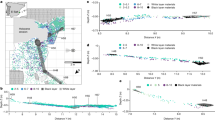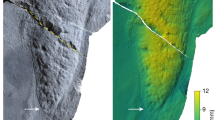Abstract
THE interpretation of the ship-like designs painted on the light-brown vases of prehistoric Egypt, such as those figured by Sir Flinders Petrie on plates xix.–xxii. of his “Prehistoric Egypt,” has given rise to considerable discussion. These designs, which have been considered to be “stockaded forts,” “barbaric designs of boats,” or “sea-going galleys,” present a more or less curved structure from which a long series of tall columns or “fringe-like lines” (Budge) depend from its under margin at about equal distances apart. Those who adopt the boat interpretation consider these fringe-like lines or columns to be oars. Others interpret them as sand-ripples. Upon this curved structure stand two erections designated “cabins” by some writers; by others as “two blockhouses forming a pylon entrance. ” They stand on each side over above a gap in the pendent series of fringe-like lines. The majority opinion supports the view that these pictures are ship-designs; but many find it difficult to convince themselves of the reality of this interpretation for several reasons.
This is a preview of subscription content, access via your institution
Access options
Subscribe to this journal
Receive 51 print issues and online access
$199.00 per year
only $3.90 per issue
Buy this article
- Purchase on Springer Link
- Instant access to full article PDF
Prices may be subject to local taxes which are calculated during checkout
Similar content being viewed by others
Author information
Authors and Affiliations
Rights and permissions
About this article
Cite this article
FORBES, H. The “Ship-designs” on Prehistoric Egyptian Vases. Nature 114, 499–500 (1924). https://doi.org/10.1038/114499a0
Issue Date:
DOI: https://doi.org/10.1038/114499a0
Comments
By submitting a comment you agree to abide by our Terms and Community Guidelines. If you find something abusive or that does not comply with our terms or guidelines please flag it as inappropriate.



